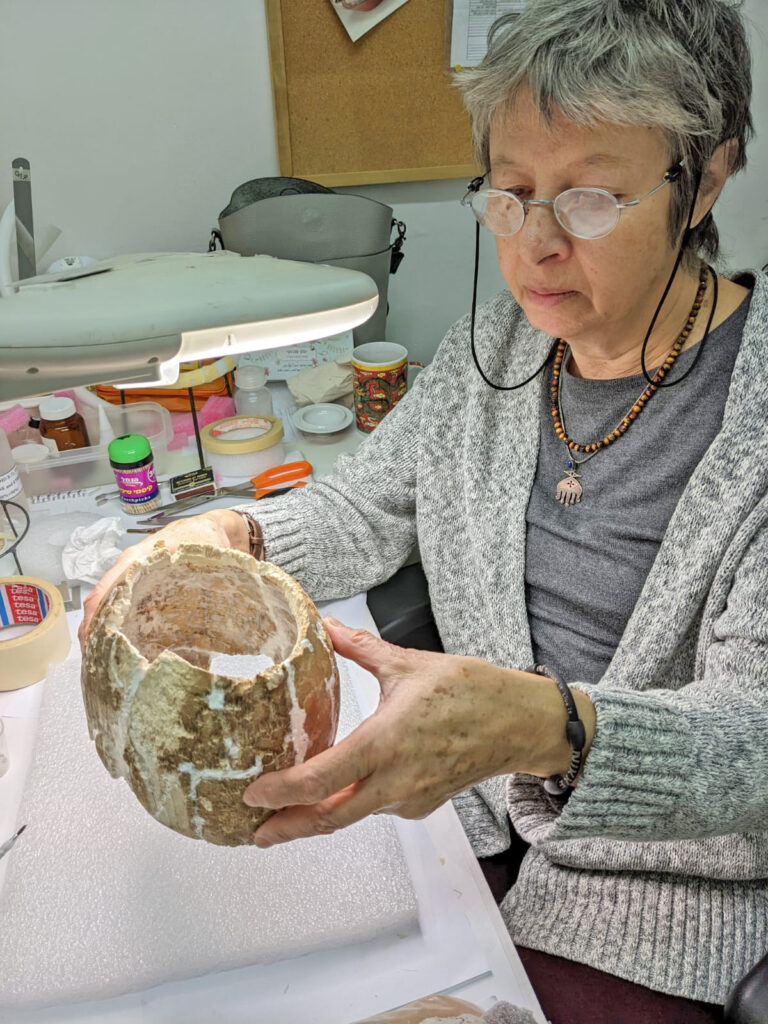
6,000-year-old elephant ivory vessel discovered in southern Israel
An ivory vessel made of elephant tusk, dated to the Chalcolithic period, was uncovered in an Israel Antiquities Authority excavation near Beer Sheva. The rare vessel, known in research as an “amphoriskos” (a small jar), attests to commercial relations between the land of Israel and Egypt six thousand years ago. This is the first time an ivory vessel from the Chalcolithic period has been found in our region. The vessel was found shattered to pieces in 2020. Brought to the Israel Antiquities Authority laboratories, it was restored in a complicated conservation process. It will be presented to the public for the first time this Thursday in Jerusalem in the context of the annual Israel Prehistoric Society conference. The conference will take place at the Jay and Jeannie Schottenstein National Archaeology Campus, where new finds will be presented from recent years of prehistoric period excavations.
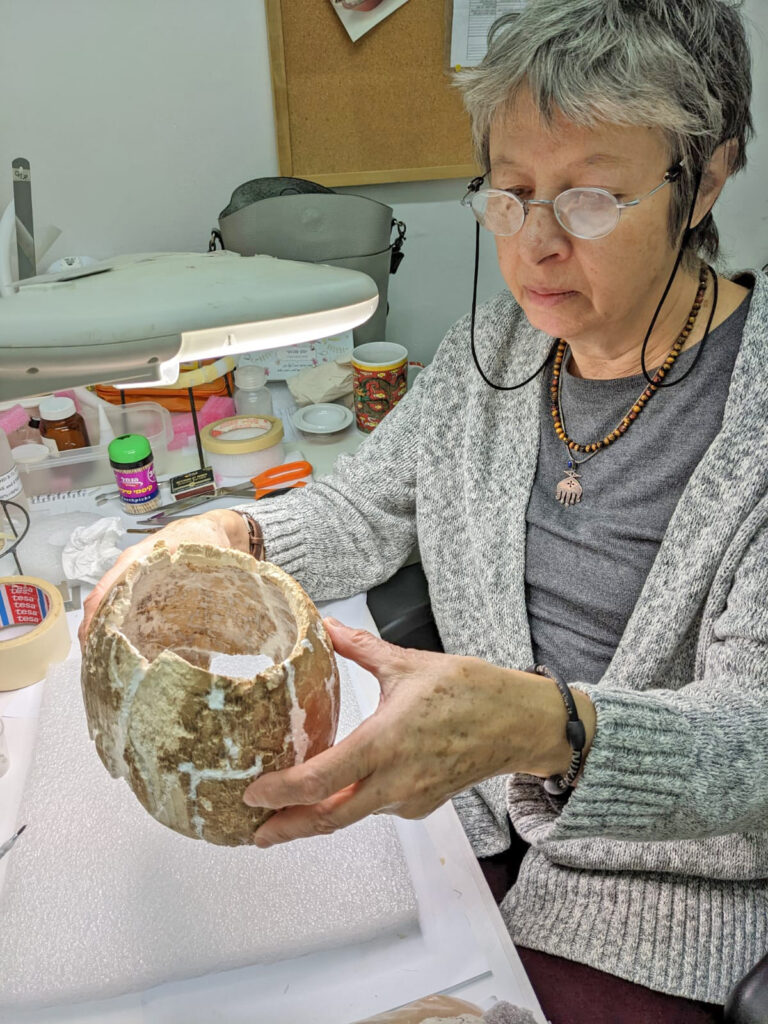
Conservator Olga Negnevitsky during vessel restoration. Photography: Ianir Milevski, Antiquities Authority
The excavation at Horbat Raqiq, near Beer Sheva, conducted by the Israel Antiquities Authority, uncovered an ancient settlement with subterranean spaces dug into the loess soil. Towards the end of the excavation, as Emil Aladjem, …., was making his last measurements, he discerned the edge of a basalt vessel. Consequently, the excavation was expanded, revealing three large impressive vessels. They were arranged such that two vessels were emplaced, one in the other, with the third acting as a cover for them both. When the upper plate was removed, the lower plate was discovered to be full of earth, within which lay the shattered pieces of an ivory vessel – a rare and precious material.
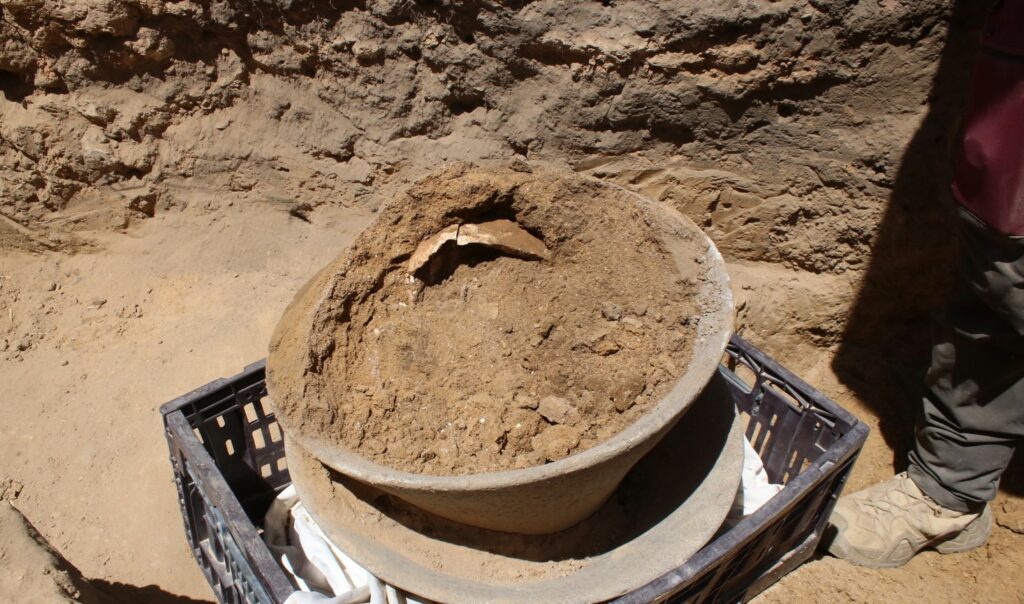
The broken ivory vessel deposited within the large basalt bowls. Photography: Davida Dagan, Antiquities Authority
“From how the bowls were arranged, the ivory vessel, which was broken already in antiquity, was clearly interred in a deliberate fashion—which would seem to attest to the importance attributed to it”, explained Dr. Ianir Milevski, former head of the Israel Antiquities Authority’s prehistoric branch, also associated with the National Research Council of Argentina. The vessels were intentionally set in a specific manner, with careful forethought. It is generally accepted in academic circles that figurines, broken vessel deposits, and burials are part of cultic ceremonial activities.
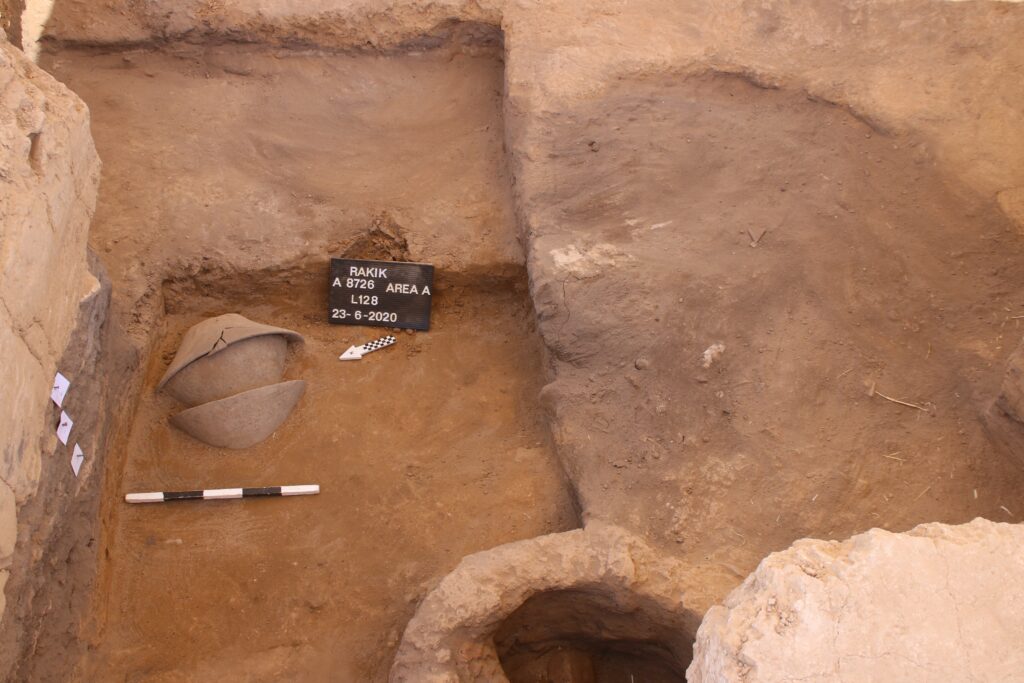
The broken ivory vessel deposited within the large basalt bowls. Photography: Davida Dagan, Antiquities Authority
“The vessel is 20 centimeters across. It is gorgeous and exceptional in its design,” adds Dr. Milevski. “The small side handles are symmetrically arranged, with two handles set into the vessel’s neck and two additional handles vertically below them at its base. “
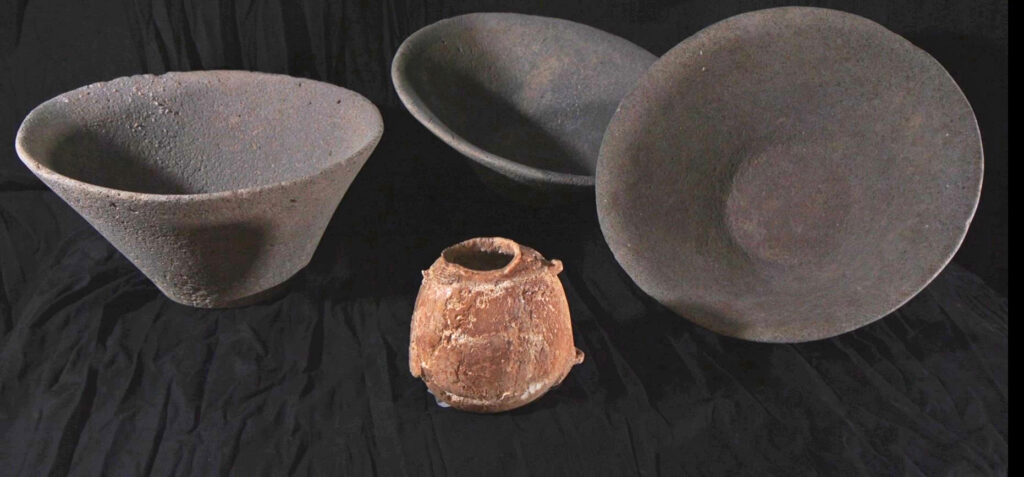
The rare ivory vessel. Photography: Emil Aladjem, Antiquities Authority
After its initial discovery, excavation directors Avishai Levi-Hevroni and Martin Pasternak of the Israel Antiquities Authority brought the vessels and their contents to the Jay and Jeannie Schottenstein National Archaeology Campus. In cooperation with Dr. Ianir Milevski and Dr. Liora Kolska Horwitz of the Hebrew University of Jerusalem, the team achieved the first understanding of the vessel’s nature – it was made from elephant tusk ivory. The conservation and restoration process led by Olga Negnevitsky, an expert in ivory conservation, was extremely complex and took much patience. The goal was to reconstruct the vessel out of its pieces unto its original form, while safeguarding its authenticity and historical value.

Avishai Levi-Hevroni, excavation director. Photography: Yoli Schwartz, Antiquities Authority
“This find deepens our understanding of the Chalcolithic period and of the cultural an exchange ties of our region with both neighboring and distant cultures,” say the researchers. “One of the most interesting questions regarding this vessel,” add Levi-Hevroni and Dr. Milevski, “is whether the vessel was brought here fully designed, or whether the ivory tusk was brought here as raw material and then sculpted by a local craftsperson. The vessel is well-made, and makes maximum use of the original tusk – which was a most precious material. If it was manufactured here, it reveals the high standard of craftspeople who dwelt here, who knew how to treat ivory, and also knew elephant anatomy.

Dr. Ianir Milevski, vessel researcher. Photography: Yoli Schwartz, Antiquities Authority
Further biomolecular analyses, which will be carried out by Dr. Harel Shochat of the University of Haifa and Dr. Liora Kolska Horwitz of the Hebrew University in Jerusalem, will establish where the ivory originated from, based on the elephant’s diet.
The post 6,000-year-old elephant ivory vessel discovered in southern Israel appeared first on Israel365 News.
Israel in the News